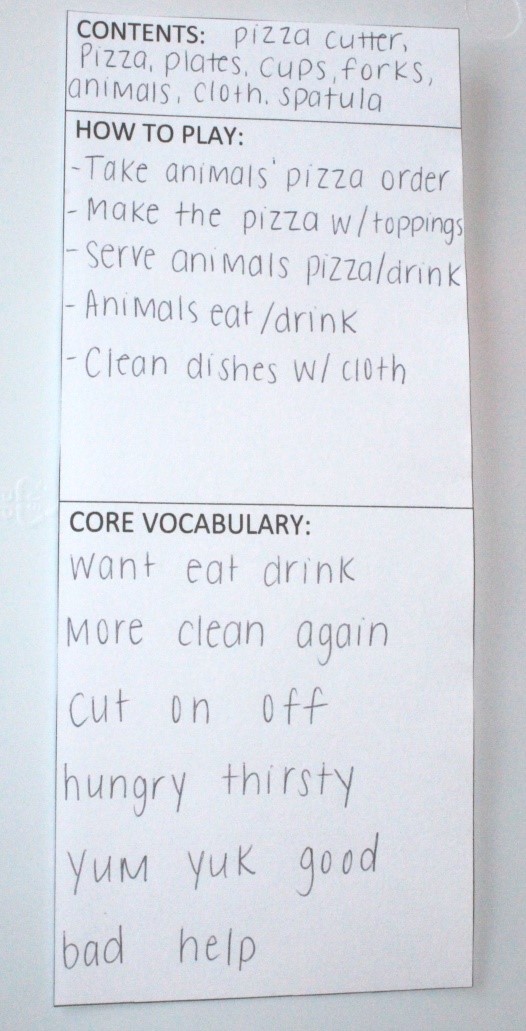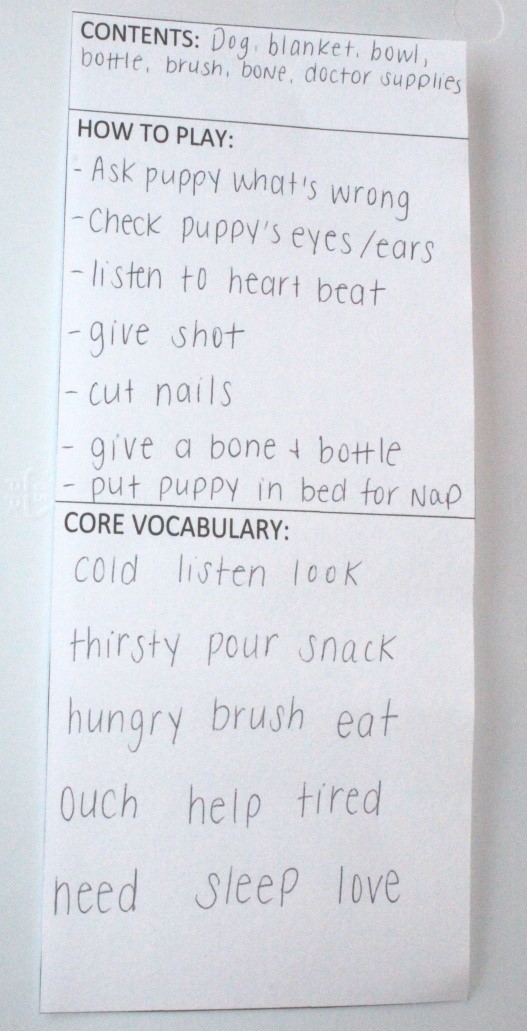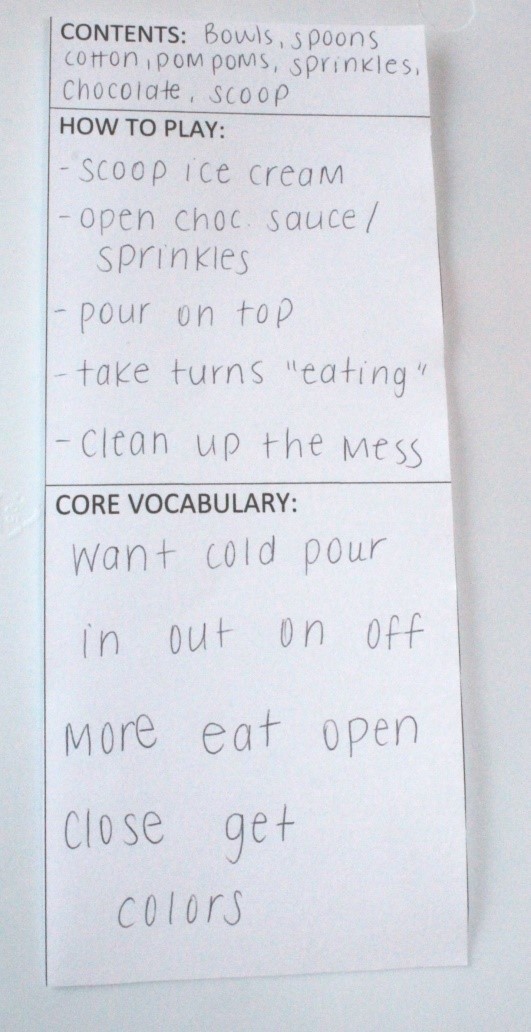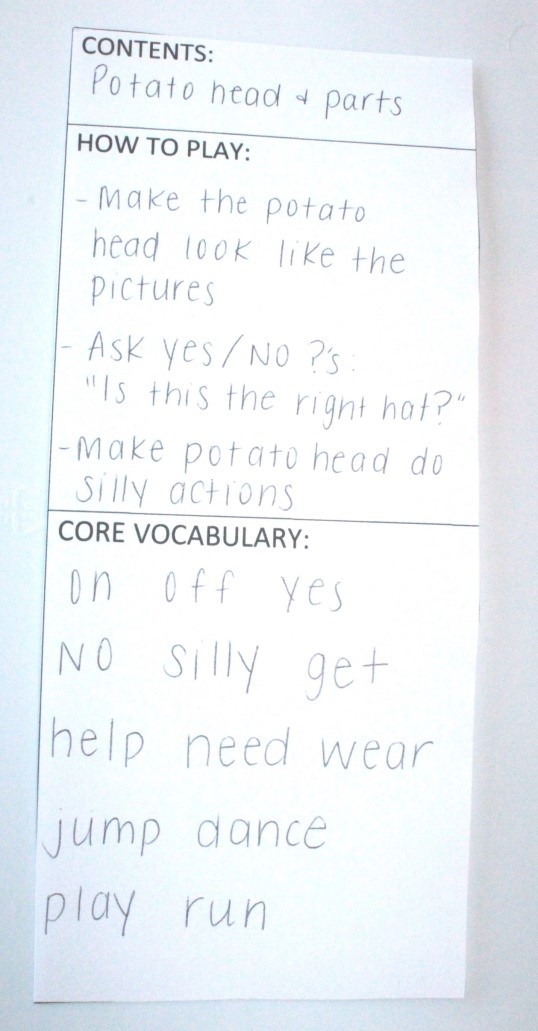
Jenna Blane, M.S., CCC-SLP
There are days when I feel as though my creativity level has plummeted to rock bottom. I look at the giant bucket of blocks in the corner of the preschool classroom, and for some reason, cannot think of an exciting way to play with them. I usually revert to something like, “stack the blocks ON top” and then, “knock the tower DOWN” (over and over). Don’t get me wrong, this is a great way to play with blocks, but will only hold the attention of a three year old for so long.
I work in a preschool classroom for students with autism and other developmental delays. A majority of my students are functionally nonverbal and use Words for Life to communicate. The toys around the classroom get rotated every week or two. However, I frequently find myself in a rut of not being able to think of innovative ways to play. I see that xylophone I have played with in the same way (“Let’s PLAY a song!”) for the three students in a row who were lucky enough to cross my path during free play time. I follow them around, “Hey Johnny, I know you really want to PLAY this xylophone with me too! Let’s MAKE music”. I often wish every toy in the classroom had an instruction booklet attached to it, titled, “Super fun ways to play with a (insert name of toy) so my students want to maintain attention and stay engaged with me”.
This is obviously not a realistic thing to do for every toy in the classroom. But, how great would it be to have something for the staff and myself to grab when the ideas for new ways to play with the available toys become stale?? This is how I came up with the idea for structured play bins.
I collaborated with the preschool teacher that I work with, and we thought of many ideas for specific toys/materials that could go in these bins. I also decided that we needed to have a label on each bin that listed: the contents (in case we had multiple bins out at once and our friends mixed up the materials), little tips on how to use the materials during play, and specific core vocabulary words that could be targeted and modeled. I sat down with the staff to brainstorm what core words we wanted listed on the bins. Making all team members a part of the preparation of the bins was the most important aspect. Since they helped create them, staff members will be more likely to pull one out to use during a lull in play.
We planned to have about 10-15 structured play bins, located in a common area of the classroom, for all staff to access. This way, when that bucket of blocks is looking as boring as a pet rock, an instructional assistant (or OT, PT, teacher, etc.) could simply open a bin and have structured play ideas and materials at his/her fingertips. The following are photos of a few of the structured play bins with corresponding labels. We have had a lot of success using them thus far with our students while modeling core vocabulary. The possibilities for other play bin options are endless! Have fun communicating during play with your little ones!







You must be logged in to post.
Stories and Strategies fo...










